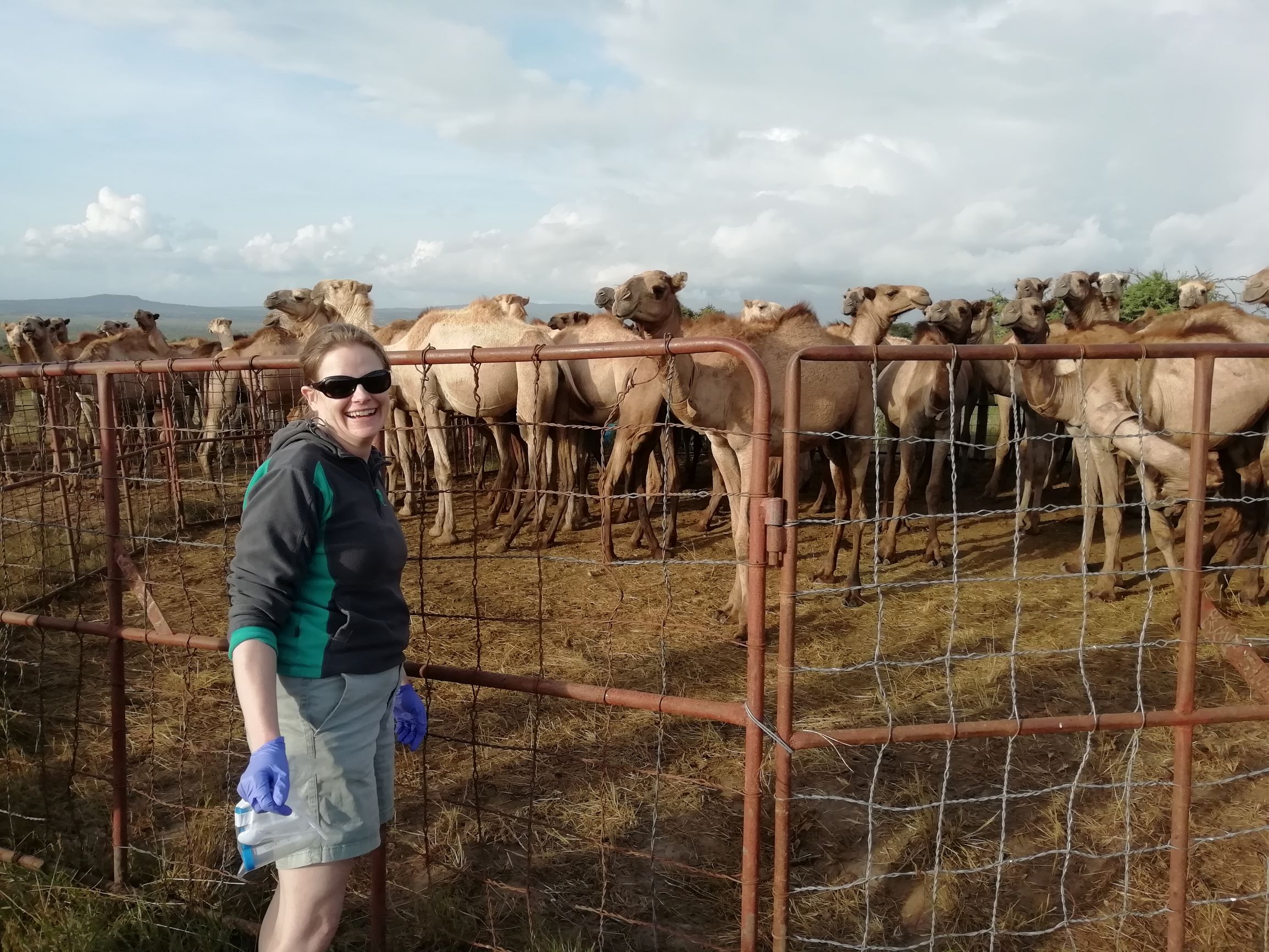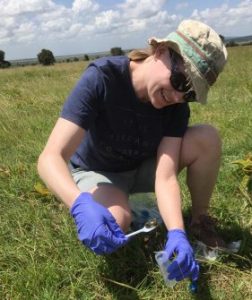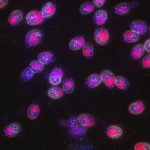
January 28, 2021, by Ruth Musson
Introducing Ellen Nisbet Assistant Professor of Microbiology
Hello! My name is Ellen, and I joined Biosciences last year as a microbiologist.
I have an undergraduate degree in microbiology from UCL (2000). After my PhD (Cambridge, 2004), I took a series of post-docs, followed by a faculty position at the University of South Australia in Adelaide (2008). I loved living in Adelaide – it is surrounded by beaches, wineries and cricket. I went through the tenure process and was promoted to Senior Lecturer. But I also managed to acquire an English boyfriend, who lived in in London. After two years of commuting back and forth, I sadly resigned the job and happily married the boyfriend.
I was awarded a Wellcome Trust grant, and they very kindly allowed me to use my grant to hire myself instead of a post-doc, so we moved to Cambridge.

Collecting samples
The grant became infinitely long, with multiple maternity leaves and part-time working. During this time, I became a fellow at Downing College, and did a lot of teaching and tutorial work. Plenty of meetings were attended with a small child (or two) in tow, and my children’s favourite place for going out was eating sausages in the College’s dining hall at High Table, a place traditionally filled with aged male professors in gowns. As my position wasn’t a permanent one, I was delighted to be offered a position as Assistant Professor of Microbiology at Nottingham. I started on 1 April, 2020, during Lockdown 1. I didn’t even set foot on campus until August!
Malaria and Coral reefs
I have two main research interests: malaria and the algae that live in coral reefs. Very surprisingly, they are related. The ancestor of the malaria parasite was photosynthetic, and contained a chloroplast. The parasites now retain a non-photosynthetic chloroplast called an apicoplast. I’ve been looking at how the apicoplast genome is transcribed, and which proteins are involved.
Not surprisingly, it is very similar to what happens in plant chloroplasts. Recently, I’ve been working with related animal diseases, such as Theileria parva which infect African cattle, trying to figure out how we could transfer our malaria-knowledge to these important livestock pathogens in collaboration with researchers in Nairobi.

Genetically modified dinoflagellate algae
The closest still-photosynthetic organisms to the malaria parasites are dinoflagellate algae, single-celled eukaryotes which can live in symbiosis with coral. The algae use photosynthesis to feed to the coral. If the algae are stressed, due to sea temperature rises, they leave the coral. This is called coral bleaching, and is a looming ecological disaster. Last year, we published the first protocol for the genetic modification of dinoflagellate algae. They’re really tough beasts, and the only way to get DNA in is through firing golden bullets at them (biolistics). We’re now using this technique to figure out what stresses the alga, and to see if we can do anything about it. This work is funded by the Gordon and Betty Moore Foundation.
Between visits to rural Africa and snorkelling on Australian coral reefs, I can highly recommend life as an eukaryotic microbiologist!
Learn more about research in the School of Biosciences here
If you are interested in working or studying with Ellen, please contact Ellen.Nisbet@nottingham.ac.uk
No comments yet, fill out a comment to be the first

Leave a Reply